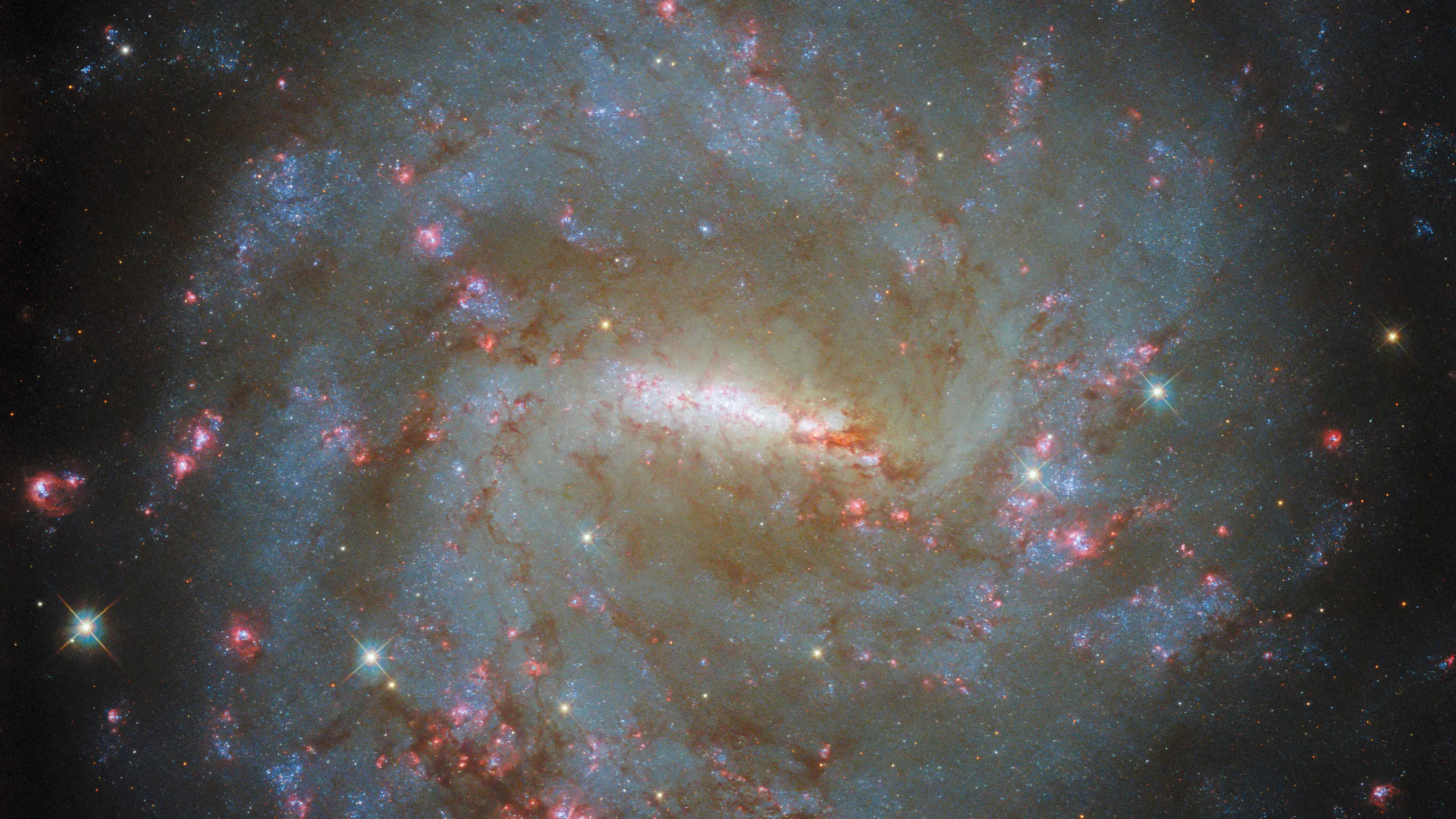
The aging but tenacious Hubble Space Telescope has beamed back yet another stunning photo of a distant galaxy.
Hubble's latest view captures the barred spiral galaxy NGC 3059, which lies about 57 million light-years from Earth. The photo, released on June 7, was taken in May using the space telescope's Wide Field Camera 3 instrument as part of a broader galactic study, according to a statement from NASA.
The space telescope uses various filters for its observations, each of which allows specific wavelengths of light to pass through to the telescope's instruments. This recent view of NGC 3059 combines data from both narrow and wide-band filters to reveal pinkish star-forming regions in the galaxy, as well as bluish patches with other stellar populations.
Related: Celebrating 30 years of the Hubble Space Telescope
"Narrow-band filters are invaluable from a scientific perspective because they filter specific wavelengths of light that are associated with specific physical and chemical processes," NASA officials said in the statement.
"For example, under certain conditions, hydrogen atoms emit red light with a wavelength value of 656.46 nanometers called H-alpha emission, or the 'H-alpha line,'" they added. "It is very useful to astronomers because its presence indicates certain physical processes and conditions and is often a tell-tale sign of newly forming stars."
H-alpha emissions are observed using narrow-band filters, whereas wide-band filters capture a wider range of wavelengths and allow astronomers to isolate sections of the electromagnetic spectrum. When combined, the data from multiple filters can be used to create detailed images of cosmic objects like NGC 3059 from across the universe, according to the statement.
Recently, Hubble was placed in a protective "safe mode" to preserve its remaining two functioning gyroscopes, which control the orientation of the telescope and allow it to target different cosmic objects. With four of its six total gyros out of commission, the telescope will now operate using a single gyro, reserving its other functioning gyro for future use.
This transition should help prolong the telescope's lifespan, ensuring it continues to deliver stunning images of the cosmos for years to come, mission team members have said.







